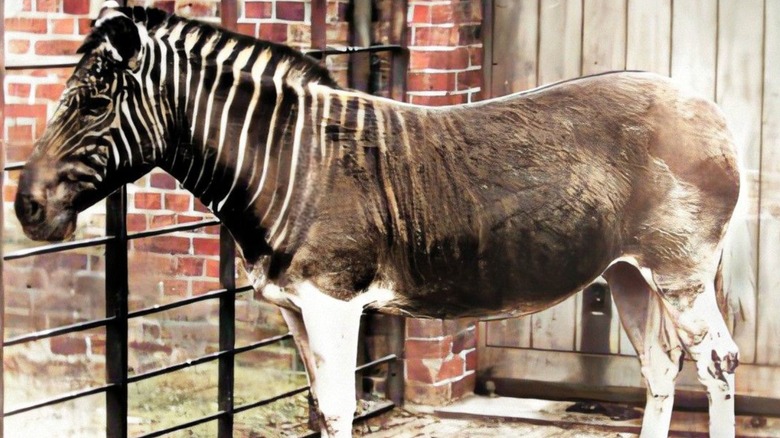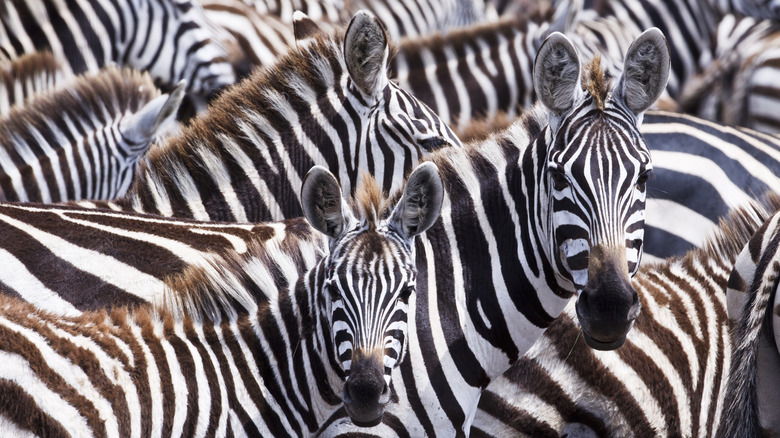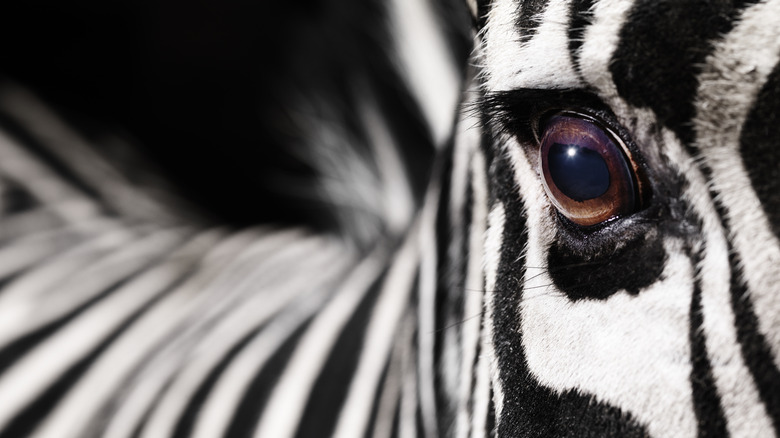We May See The Quagga Again And Here's How
It was probably just yesterday that you were saying to someone, "Gheesh, when and how am I gonna start seeing some quaggas again?" And then that person said, "What the hell's a quagga?," to which you replied, "Hang on, there's this article about it." And so you, reader, have arrived here seeking answers about one of the more recognizable extinct species you might have seen in pictures — the horse thing that looks like a zebra in the front but has no stripes in the rear. And we say zebra because that's what a quagga was: A type of zebra. And if the DNA tinkerers at The Quagga Project have their way, we're going to be seeing many more stripeless zebra butts strutting around here and there. Then again, we kind of already have.
In what sounds like a case of making good on past-life sins, the good folks at The Quagga Project have set out to rectify the "ruthless hunting" and "planned extermination" in South Africa that led to the last quagga mare dying in captivity in 1883. Sadly, we're not talking about cloning in a sci-fi, "The 6th Day" kind of way. We're talking about selective breeding. Basically, The Quagga Project took a handful of zebras — nine out of 2,500 — and boxed them away in a nature reserve near Robertson, South Africa in 1987. Then it started choosily breeding zebras to make them gradually look like quaggas. But does that mean that the species is back?
How quaggas went extinct
Zebras are pretty cute, right? With their big ears and black-and-white stripes that, contrary to common belief, don't act as camouflage for predators but likely serve to deter mosquitos from landing on them. But unlike horses, they can't be domesticated. Despite their appearance, they're actually pretty aggressive, volatile, unpredictable, and not well-shaped for saddles. Folks have tried to domesticate them for over a century now and even cross-bred them with horses to make the "zorse" and with donkeys to make the "zonkey." Terrible names aside, zebras remain wild in an ever-shrinking ecosystem.
Quaggas, however, did not fare so well. They were also zebras, which live across a wide range of land all the way up to Kenya in Africa's east. But the quagga, a subset of a plains-based species called Burchell's zebras, occupied a far-south environment centered in the semi-desert region of Karoo in modern-day South Africa. As Smithsonian Magazine explains, this means that quaggas were closer to an increasingly populated South Africa in the 1800s, which made them the perfect source of meat and hides. They also competed with livestock for grass.
At this time, though, folks didn't even notice that the quagga was a different species of animal than other, fully-striped zebras. Quagga do look similar, but they're missing the stripes in the back, on the legs and tail, and are more reddish all around. As mentioned, the last quagga in captivity died in 1883, preceded by the last one in the wild sometime in the 1870s. For nearly 40 years now, folks have been trying to breed them back.
The return of the quagga
As The Quagga Project says, the un-extinction of quaggas started back in 1955 with German zoo director, Lutz Heck. That year, he penned a book where he suggested taking plains zebras — a close relative of the quagga — and breeding them for traits like reddish fur and a lack of stripes. Strictly speaking, this wouldn't mean reviving a dead species but creating a new quagga from existing zebras. Natural historian Reinhold Rau picked up the baton in the 1970s, but his discussions with zoologists and national park authorities fell flat. It took until the development of DNA analysis in the 1980s to get quagga resurrection off the ground (not the most bizarre thing DNA has been used for).
That's when researchers from the University of California used samples of quagga blood and tissue from hides to definitively say that the quagga was a subset of plains zebras. This breakthrough came in 1984, one year after Heck died, and by 1986, The Quagga Project was founded. The next year saw nine zebras captured from Etosha National Park in Namibia for the purpose of rebuilding the quagga species.
The first foal of this neo-quagga bunch was born in 1988, then the second generation in 1997, and new zebras got introduced into the mix along the way. It's taken all the way to the present to get six of what are called "Rau Quaggas" after the '70s natural historian. That's six out of 100. The goal is to get 50 of these animals, but depending on your perspective, that's 50 of a species that still remains lost.


